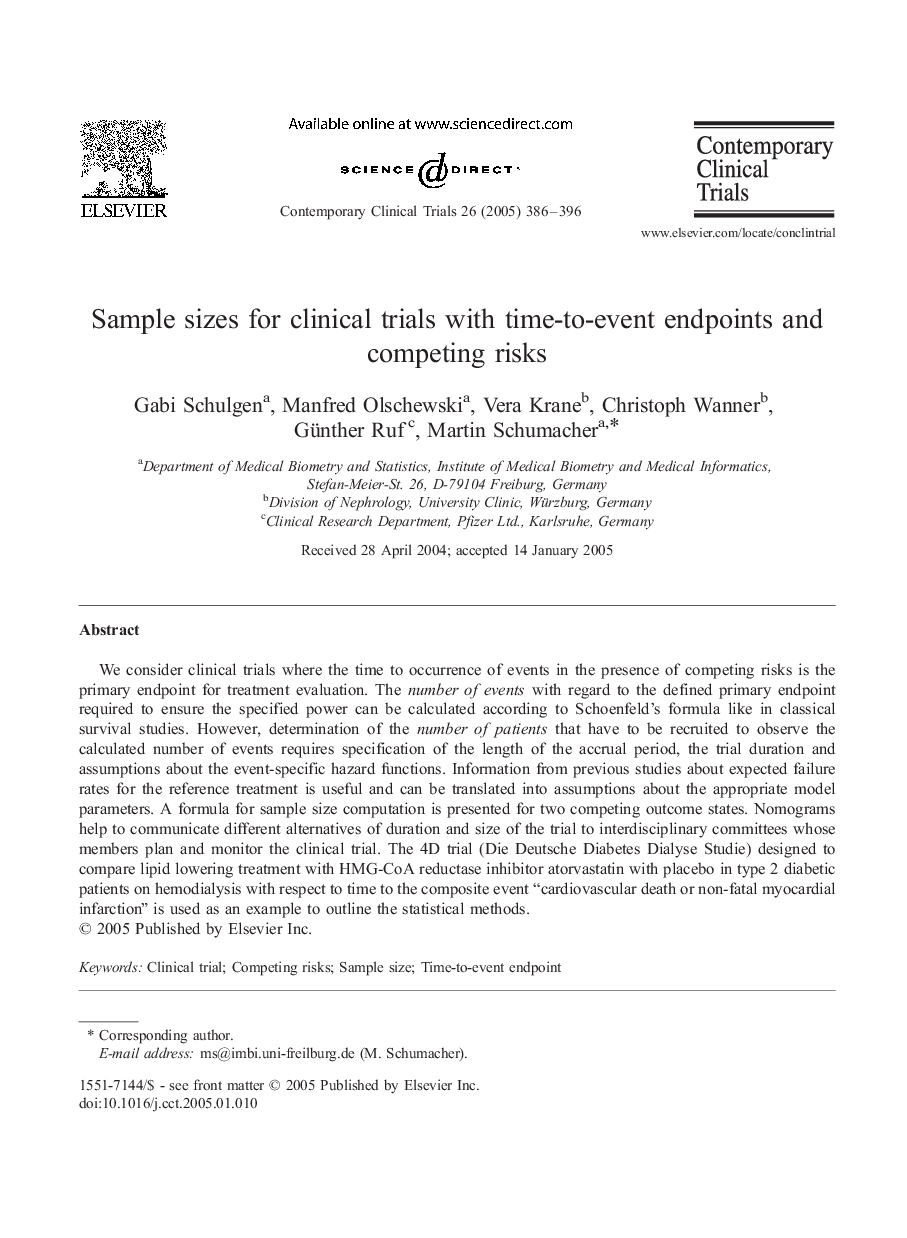| Article ID | Journal | Published Year | Pages | File Type |
|---|---|---|---|---|
| 9293481 | Contemporary Clinical Trials | 2005 | 11 Pages |
Abstract
We consider clinical trials where the time to occurrence of events in the presence of competing risks is the primary endpoint for treatment evaluation. The number of events with regard to the defined primary endpoint required to ensure the specified power can be calculated according to Schoenfeld's formula like in classical survival studies. However, determination of the number of patients that have to be recruited to observe the calculated number of events requires specification of the length of the accrual period, the trial duration and assumptions about the event-specific hazard functions. Information from previous studies about expected failure rates for the reference treatment is useful and can be translated into assumptions about the appropriate model parameters. A formula for sample size computation is presented for two competing outcome states. Nomograms help to communicate different alternatives of duration and size of the trial to interdisciplinary committees whose members plan and monitor the clinical trial. The 4D trial (Die Deutsche Diabetes Dialyse Studie) designed to compare lipid lowering treatment with HMG-CoA reductase inhibitor atorvastatin with placebo in type 2 diabetic patients on hemodialysis with respect to time to the composite event “cardiovascular death or non-fatal myocardial infarction” is used as an example to outline the statistical methods.
Related Topics
Health Sciences
Medicine and Dentistry
Medicine and Dentistry (General)
Authors
Gabi Schulgen, Manfred Olschewski, Vera Krane, Christoph Wanner, Günther Ruf, Martin Schumacher,
